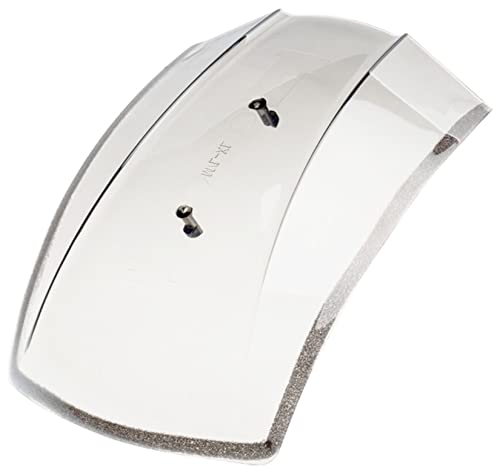Posted on the original thread. Going with a fresh thread.
Part 1 so t speak is: 1985 GL1200 Limited ECU Replacement/Upgrade
The break from this project, the work I've done on the Limited Edition, and my understanding the CFI system since I started looking into a replacement aftermarket ECU has been beneficial.
This project is an OEM ECU replacement project, not an FI conversion. This in itself should make this project much easier to achieve.
I have started watching aftermarket ECU videos again and there are a lot of aftermarket ECUs that are a direct replacement for the OEM ECU be it auto or motorcycle. This appears to be the way forward today, and instead of replacing chips and such that was the craze - may still be, from a few years back, having a tunable aftermarket ECU installed that is non-OEM is probably preferable. Don't get into the proprietary issues. Some are splicing into the OEM wiring harness, keeping the existing OEM connectors as a fall back system. A lot has happened since I first started to look into this, or maybe I just wasn't looking at this side of the issue.
I briefly contemplated switching to a Mega/Micro Squirt, but cost is quite steep and I have the Speeduino components on hand. Get the pinout correct, populate the program with the appropriate numbers, and ensure the existing CFI components are compatible is the way forward. Need to determine if sequential firing is better than batch firing, either works, and can switch in the future. The Speeduino is more flexible In this regard. Timing correct and all would be well.
So as to not make the readership go through Part 1 to get some salient points will repost here.
Reviewing notes, forum threads, Speeduino information. Have the bones for the replacement ECU, Speeduino board and such.
Time has a good way of clearing/focusing a person's thoughts. I realize from my renewed reading, that I am just replacing an older ECU with a newer one. This does, or should not, require any wiring or component changes. There will be some reduction in the components used such as the cam sensors - have two, only one required. A new trigger wheel, thinking 16/24 tooth, no need for the missing tooth aspect because of the cam sensor.
I do lose a bit of functionality. The OEM ECU diagnostic program, as well as the dash indicator light.
The cam sensors, Gr/Gl, were Honda's answer to sequential injection and faster starts. My reading indicates that the benefit of sequential injection instead of batch firing is not that much. The Speeduino can use either.
The Speeduino does not need to use a cam sensor, but that would require a missing tooth trigger wheel.
I have updated my pin-out spreadsheet. Have the 95% solution regarding this.
Need to get the components out, get Tuner Studio and such back on line, and read the Speeduino info again. Have not been on the Speeduino forum for some time.
Part 1 so t speak is: 1985 GL1200 Limited ECU Replacement/Upgrade
The break from this project, the work I've done on the Limited Edition, and my understanding the CFI system since I started looking into a replacement aftermarket ECU has been beneficial.
This project is an OEM ECU replacement project, not an FI conversion. This in itself should make this project much easier to achieve.
I have started watching aftermarket ECU videos again and there are a lot of aftermarket ECUs that are a direct replacement for the OEM ECU be it auto or motorcycle. This appears to be the way forward today, and instead of replacing chips and such that was the craze - may still be, from a few years back, having a tunable aftermarket ECU installed that is non-OEM is probably preferable. Don't get into the proprietary issues. Some are splicing into the OEM wiring harness, keeping the existing OEM connectors as a fall back system. A lot has happened since I first started to look into this, or maybe I just wasn't looking at this side of the issue.
I briefly contemplated switching to a Mega/Micro Squirt, but cost is quite steep and I have the Speeduino components on hand. Get the pinout correct, populate the program with the appropriate numbers, and ensure the existing CFI components are compatible is the way forward. Need to determine if sequential firing is better than batch firing, either works, and can switch in the future. The Speeduino is more flexible In this regard. Timing correct and all would be well.
So as to not make the readership go through Part 1 to get some salient points will repost here.
Reviewing notes, forum threads, Speeduino information. Have the bones for the replacement ECU, Speeduino board and such.
Time has a good way of clearing/focusing a person's thoughts. I realize from my renewed reading, that I am just replacing an older ECU with a newer one. This does, or should not, require any wiring or component changes. There will be some reduction in the components used such as the cam sensors - have two, only one required. A new trigger wheel, thinking 16/24 tooth, no need for the missing tooth aspect because of the cam sensor.
I do lose a bit of functionality. The OEM ECU diagnostic program, as well as the dash indicator light.
The cam sensors, Gr/Gl, were Honda's answer to sequential injection and faster starts. My reading indicates that the benefit of sequential injection instead of batch firing is not that much. The Speeduino can use either.
The Speeduino does not need to use a cam sensor, but that would require a missing tooth trigger wheel.
I have updated my pin-out spreadsheet. Have the 95% solution regarding this.
Need to get the components out, get Tuner Studio and such back on line, and read the Speeduino info again. Have not been on the Speeduino forum for some time.




















































